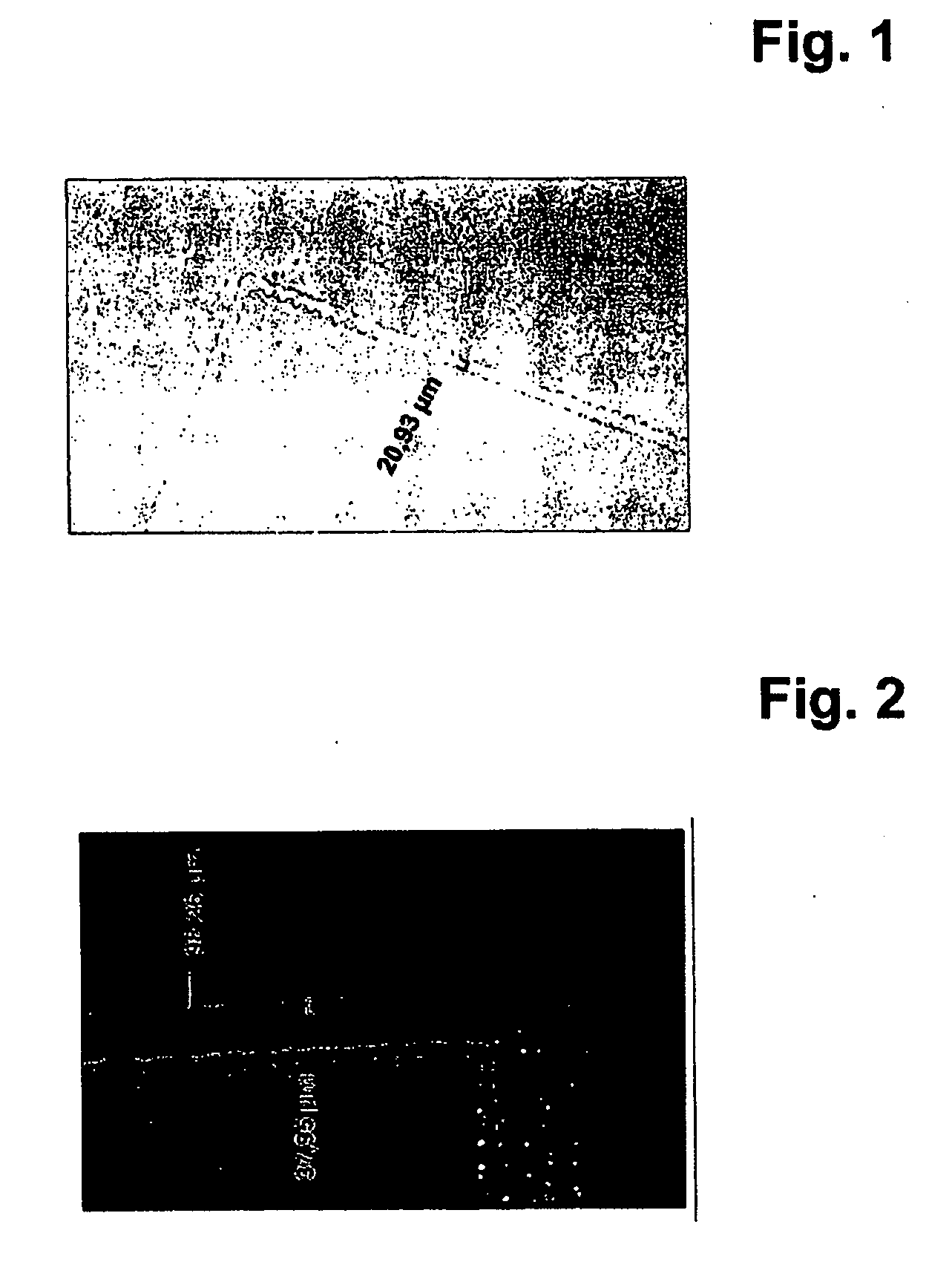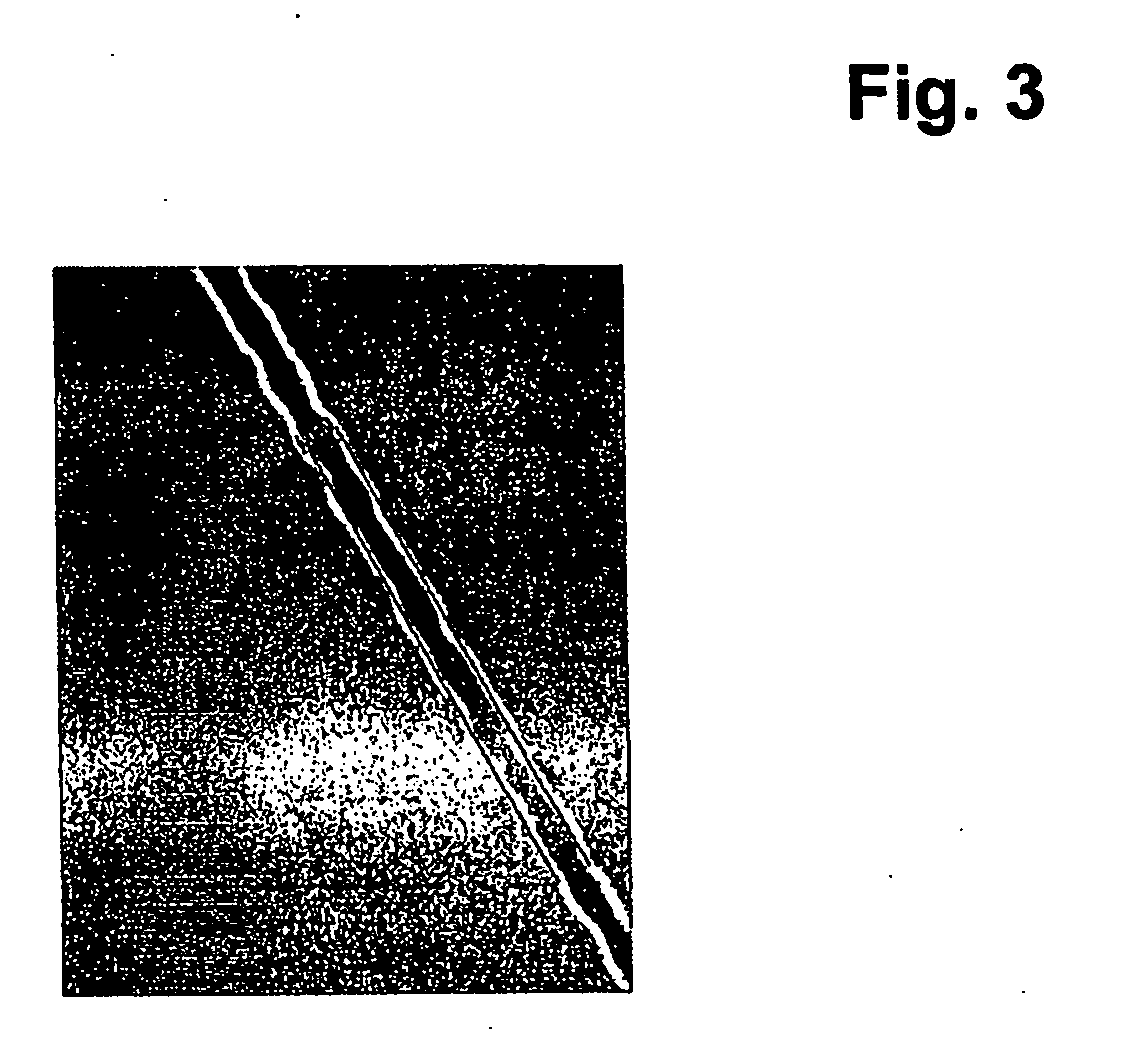Printable medium for etching oxidic, transparent and conductive layers
a technology of transparent and conductive layers and printing medium, which is applied in the field of printing, can solve the problems of limiting the applicability, affecting the effect of good electrical conductivity of indium oxide crystal structure, and limiting the application of polymer-based (epoxy or phenolic resin) metallisation pastes, so as to achieve good properties and good properties
- Summary
- Abstract
- Description
- Claims
- Application Information
AI Technical Summary
Benefits of technology
Problems solved by technology
Method used
Image
Examples
example 1
[0085]Etching paste comprising an inorganic nanoparticulate solid additive
[0086]218 g of deionised water
[0087]223 g of 1-methyl-2-pyrrolidone
[0088]1.6 g of ethylene glycol
[0089]The following are added successively with stirring to this solvent mixture:
[0090]465 g of phosphoric acid (85%)
[0091]and
[0092]11 g of polyvinylpyrrolidone,
where polyvinylpyrrolidone is incorporated with vigorous stirring.
[0093]50 g of carbon black
[0094]are then added to the clear homogeneous mixture, which is stirred for a further 2 hours.
[0095]The ready-to-use paste can be printed using a 280 mesh stainless-steel fabric screen. In principle, polyesters or similar screen materials can also be used. The crucial factor is that the screen material selected is inert to the etching component present in the etching composition.
[0096]The etching paste prepared has proven to be stable on storage over a long period with retention of the advantageous etching properties. Further examples of compositions according to the...
PUM
| Property | Measurement | Unit |
|---|---|---|
| Temperature | aaaaa | aaaaa |
| Percent by mass | aaaaa | aaaaa |
| Percent by mass | aaaaa | aaaaa |
Abstract
Description
Claims
Application Information
 Login to View More
Login to View More - R&D
- Intellectual Property
- Life Sciences
- Materials
- Tech Scout
- Unparalleled Data Quality
- Higher Quality Content
- 60% Fewer Hallucinations
Browse by: Latest US Patents, China's latest patents, Technical Efficacy Thesaurus, Application Domain, Technology Topic, Popular Technical Reports.
© 2025 PatSnap. All rights reserved.Legal|Privacy policy|Modern Slavery Act Transparency Statement|Sitemap|About US| Contact US: help@patsnap.com


